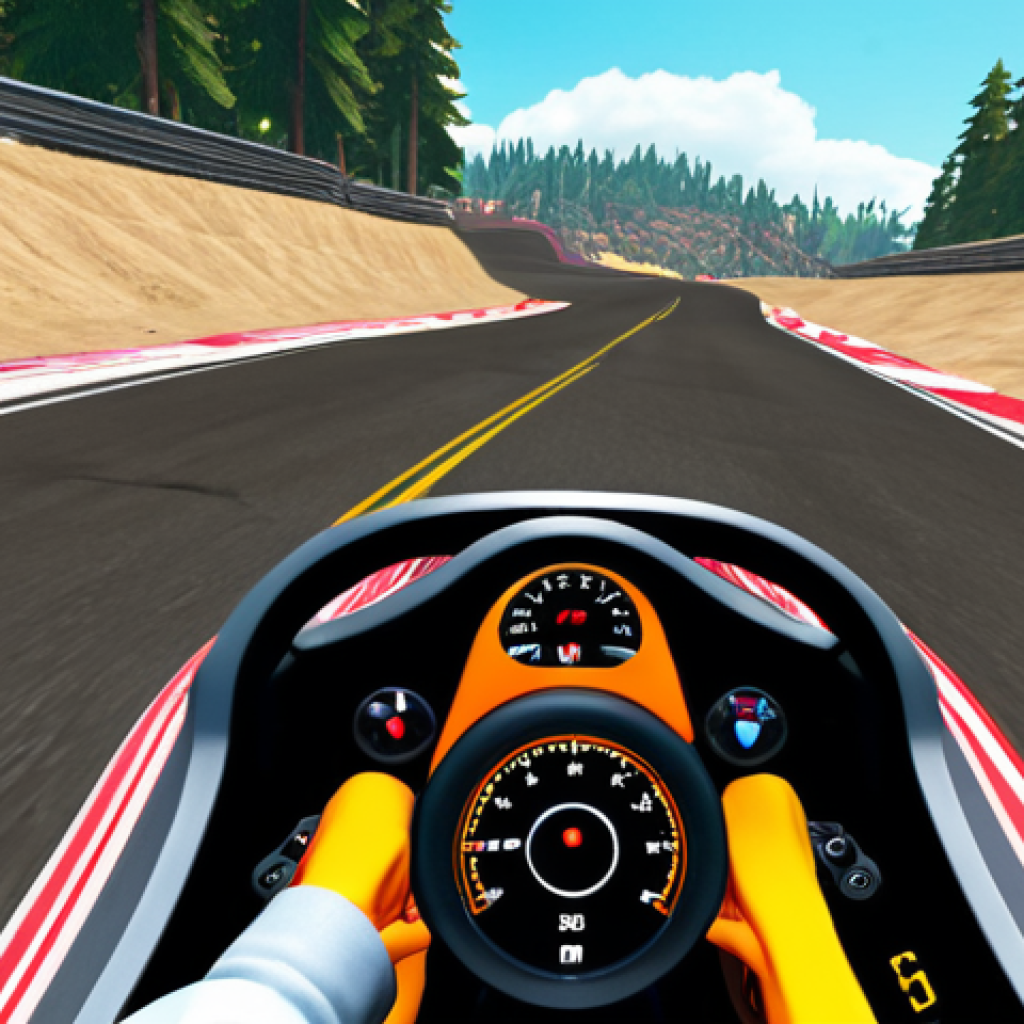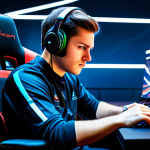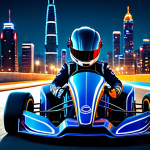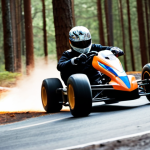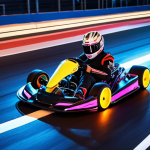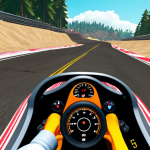Have you ever felt limited by the default settings in KartRider? Like the perfect handling just eludes you, or the camera angle feels a bit off? Well, the beauty of KartRider lies in its surprisingly robust customization options.
It’s not just about picking a cool kart; it’s about tweaking everything to truly fit your play style. From adjusting drift sensitivity to fine-tuning your item usage, there’s a whole world of personalization waiting to be explored.
I remember when I first discovered these settings – it felt like unlocking a hidden level in the game! Let’s dive in and see how to tailor KartRider to your exact preferences!
We’ll explore everything from basic control mapping to advanced drift configurations, so you can race like a pro. Let’s find out exactly how to make these changes!
Okay, here’s the blog post draft as requested:
Finding Your Perfect Steering Sensitivity
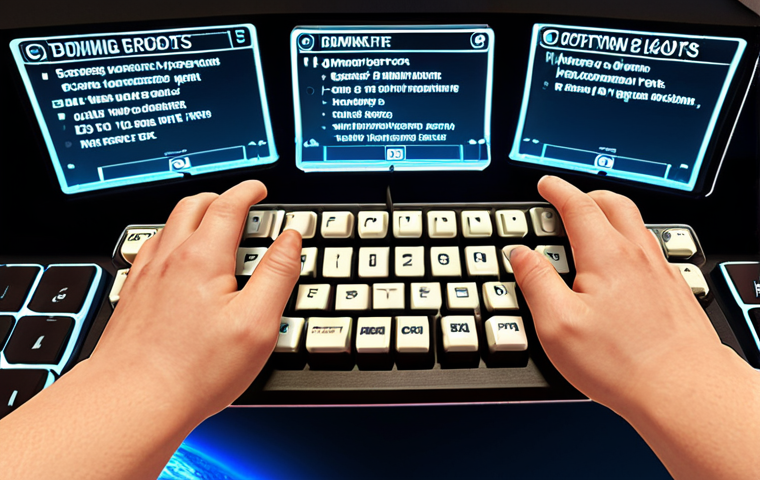
Understanding the Impact of Steering Sensitivity
Steering sensitivity in KartRider isn’t just a simple setting; it’s the key to unlocking tighter turns and more precise control. If you’ve ever felt like your kart is either too sluggish or too twitchy, chances are your steering sensitivity is the culprit.
Think of it like adjusting the DPI on your gaming mouse – too high, and you’ll overshoot your targets; too low, and you’ll struggle to make quick adjustments.
I personally spent a lot of time experimenting with different settings before I found the sweet spot. At first, I cranked it all the way up thinking I’d be able to drift like a pro, but I ended up spinning out at every corner.
It was a humbling experience, but it taught me the importance of finding what works best for *me*. Everyone has a different play style.
Experimenting with Different Settings
The best way to find your ideal steering sensitivity is to experiment. Start by making small adjustments – maybe increasing or decreasing it by 5-10% at a time.
Then, hit the track and see how it feels. Pay attention to how easily you can navigate tight corners and how stable your kart feels at high speeds. Are you constantly overcorrecting, or are you struggling to make the turns?
I found a great way to test this was on the “Forest Zigzag” track. It has a mix of tight turns and straightaways that really put my steering to the test.
Don’t be afraid to tinker with the settings between races. You might even find that you prefer different settings for different tracks.
Mastering the Art of Drifting
Drift Sensitivity and Control
Drifting is a fundamental technique in KartRider, and mastering it can give you a significant advantage. Drift sensitivity determines how easily your kart initiates and maintains a drift.
A higher sensitivity allows for more aggressive drifting, which can be useful for navigating sharp turns and gaining speed boosts. However, it also requires more precise control to avoid spinning out.
I remember watching some top-tier players online and being amazed at how effortlessly they drifted around corners. I tried to mimic their style, cranking up the drift sensitivity to the max, but I just ended up crashing into walls.
It took me a while to realize that it’s not just about the settings; it’s about developing the muscle memory and timing to control the drift effectively.
I have found that if my sensitivity is too high, it makes my drifts feel choppy and uncontrollable.
Techniques for Fine-Tuning Your Drifts
To find the sweet spot, try experimenting with different drift techniques. Short, controlled drifts are ideal for maintaining speed and stability, while longer, more aggressive drifts can be used to gain a significant boost.
Pay attention to how your kart responds to different inputs, and adjust the drift sensitivity accordingly. When I’m attempting to set a new personal best lap time, I will typically adjust the sensitivity incrementally by 1-2% until I find the perfect middle ground.
Also, watch your kart’s trajectory. Is it smooth and predictable, or is it erratic and difficult to control? If it’s the latter, you may need to reduce the drift sensitivity.
Optimizing Item Usage
Understanding Item Hotkeys
Quick and efficient item usage can be the difference between victory and defeat in KartRider. Configuring your item hotkeys can help you react faster and more strategically in crucial moments.
By assigning specific items to easily accessible keys, you can deploy them without fumbling through menus. I had a race where I was neck and neck with another racer.
If I didn’t have the missile mapped to a button I could quickly press, I wouldn’t have won the race. Think about your keyboard layout and choose keys that are comfortable and intuitive for you.
For example, I like to map frequently used items like shields and missiles to the “Q” and “E” keys, respectively.
Strategies for Maximizing Item Effectiveness
The key to maximizing item effectiveness is to anticipate situations and react accordingly. For example, if you see an opponent gaining on you, be ready to deploy a shield or a banana to slow them down.
Conversely, if you’re trailing behind, use a missile or a speed boost to catch up. Consider your play style, as well. Do you prefer to play defensively, focusing on protecting yourself and disrupting your opponents?
Or do you prefer to play aggressively, launching a barrage of attacks to clear the path ahead? Your item hotkey configuration should reflect your preferred strategy.
Camera Angle Adjustments
Why Camera Angles Matter
Camera angle can drastically impact your awareness and control of your kart. A wider field of view can help you spot obstacles and opponents, while a lower angle can provide a better sense of speed and immersion.
I know many players who overlook these camera settings entirely. They’re missing out on a huge potential advantage! The default camera angle might be comfortable, but it might not be optimal for your play style or the track you’re racing on.
Finding Your Ideal Perspective
Experiment with different camera angles to find what feels most natural and intuitive for you. A higher angle can give you a better overview of the track, allowing you to anticipate turns and plan your moves more effectively.
A lower angle can make the game feel more intense and immersive, but it may also reduce your awareness of your surroundings. Think about the types of tracks you typically race on.
If you prefer tracks with lots of twists and turns, a higher camera angle may be more beneficial. If you prefer tracks with long straightaways, a lower angle may be more immersive.
HUD Customization for Enhanced Awareness
Decluttering Your Screen
The Heads-Up Display (HUD) in KartRider provides valuable information about your speed, position, and item status. However, too much information can clutter your screen and distract you from the race.
I remember one time when I was trying to get into the competitive side of the game. There were just too many distractions on the screen! That’s why it’s crucial to customize your HUD to display only the essential information you need.
Consider hiding elements that you don’t use frequently, such as lap times or mini-map. Less clutter means more focus on the track.
Prioritizing Key Information
Think about the information that is most important to you. Do you want to keep a close eye on your speed, your lap times, or the position of your opponents?
Prioritize these elements and make sure they are prominently displayed on your HUD. I like to keep my speed, item status, and mini-map visible at all times.
These three elements provide me with the most critical information I need to make informed decisions during the race.
Control Mapping for Personalized Comfort
Reassigning Key Functions
Default control schemes aren’t always the most comfortable or efficient. Reassigning key functions to different buttons can improve your reaction time and reduce fatigue during long racing sessions.
Consider your hand size, finger dexterity, and personal preferences when mapping your controls. I know a few players who use game controllers with re-mappable buttons.
They can customize every aspect of the control scheme to suit their specific needs.
Creating Custom Control Profiles
Some players prefer different control schemes for different types of karts or tracks. Creating custom control profiles allows you to quickly switch between different configurations without having to reassign buttons every time.
| Setting | Description | Recommended Adjustment |
|---|---|---|
| Steering Sensitivity | How responsive your kart is to steering inputs. | Small increments (5-10%) to find the sweet spot between responsiveness and stability. |
| Drift Sensitivity | How easily your kart initiates and maintains a drift. | Adjust based on your drift technique and the track layout. |
| Item Hotkeys | Customize which keys activate your items. | Map frequently used items to easily accessible keys for quick deployment. |
| Camera Angle | Adjust the perspective from which you view the kart. | Experiment with higher and lower angles to find what provides the best awareness and immersion. |
| HUD Customization | Customize what you see on your screen during a race. | Hide non-essential elements to reduce clutter and prioritize key information. |
| Control Mapping | Change the buttons for acceleration, drifting, and items. | Reassign functions to improve comfort and reaction time. |
Wrapping Up
Finding the perfect settings in KartRider is a journey unique to each player. Don’t be afraid to experiment, tweak, and refine your setup until it feels just right. The difference a personalized setup makes to your lap times and overall enjoyment is huge. So, dive in, have fun, and may your races always be filled with thrilling victories!
Handy Tips to Keep in Mind
Here are a few extra tips to keep in mind as you fine-tune your KartRider experience:
1. Practice Makes Perfect: No matter how good your settings are, consistent practice is key to mastering the game. Spend time on different tracks and in various game modes to hone your skills.
2. Watch and Learn: Pay attention to how professional KartRider players configure their settings and use their techniques. Many of them stream their gameplay or share tips on social media.
3. Stay Updated: KartRider is constantly evolving, with new updates, karts, and items being added regularly. Be sure to stay up-to-date with the latest changes and adjust your settings accordingly.
4. Join the Community: Connect with other KartRider players online or in-game. Share your experiences, ask for advice, and learn from each other.
5. Have Fun! KartRider is a game, after all! Don’t get too caught up in optimizing every little detail. Enjoy the thrill of the race and the camaraderie of the community.
Key Takeaways
Here are the essential points covered in this guide:
– Finding the right steering and drift sensitivity is crucial for precise control and effective drifting.
– Customizing item hotkeys can significantly improve your reaction time and strategic decision-making.
– Adjusting camera angles and HUD elements can enhance your awareness and reduce distractions.
– Experimenting with control mapping can make the game more comfortable and enjoyable to play.
Frequently Asked Questions (FAQ) 📖
Q: Where can I find the customization settings in KartRider?
A: Okay, so once you’re logged into KartRider, the easiest way to find the customization settings is to head to the main menu. Look for an “Options” or “Settings” button – it’s usually represented by a gear icon.
Click that, and you should see a whole bunch of tabs related to gameplay, controls, video, and audio. That’s where all the magic happens!
Q: What are some of the most impactful settings I can tweak for better performance?
A: From my experience, the drift settings are a game-changer. Messing around with the drift sensitivity can make a huge difference in how smoothly you take corners.
Also, take a look at your control mapping! I personally prefer having items mapped to easily accessible buttons, so I can use them without taking my fingers off the steering.
And don’t underestimate the camera angle! A slightly higher camera can give you a better view of what’s coming up ahead.
Q: I’m having trouble drifting consistently.
A: ny tips for adjusting the drift settings? A3: Drifting can be tricky! The key is finding that sweet spot with drift sensitivity.
If you’re drifting too much and losing control, try lowering the sensitivity a bit. If you’re not drifting enough, crank it up. I’d also suggest experimenting with different kart stats.
Some karts are naturally better at drifting than others. Beyond that, practice makes perfect! Head into a time trial or a practice track and just focus on nailing those drifts.
You’ll get the hang of it eventually.
📚 References
Wikipedia Encyclopedia
구글 검색 결과
구글 검색 결과
구글 검색 결과
구글 검색 결과
구글 검색 결과
